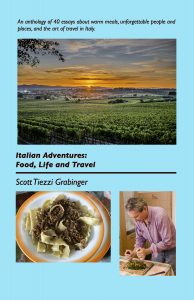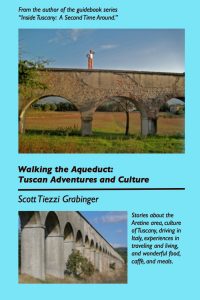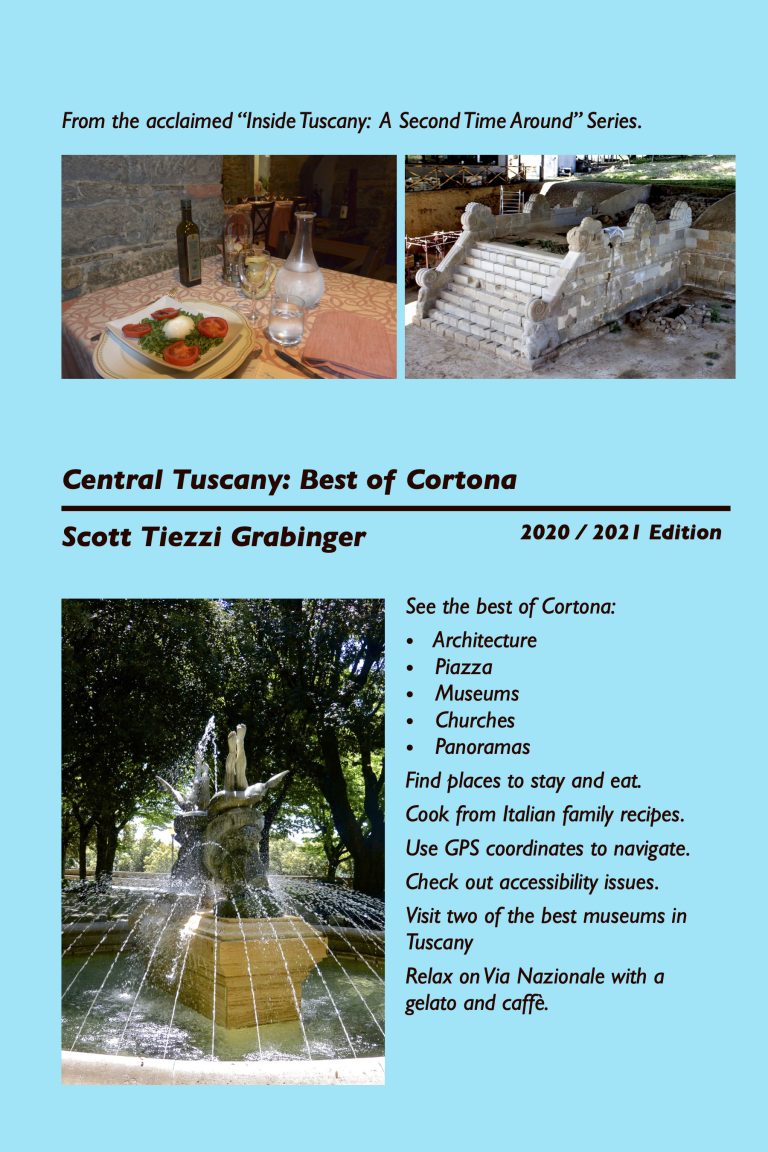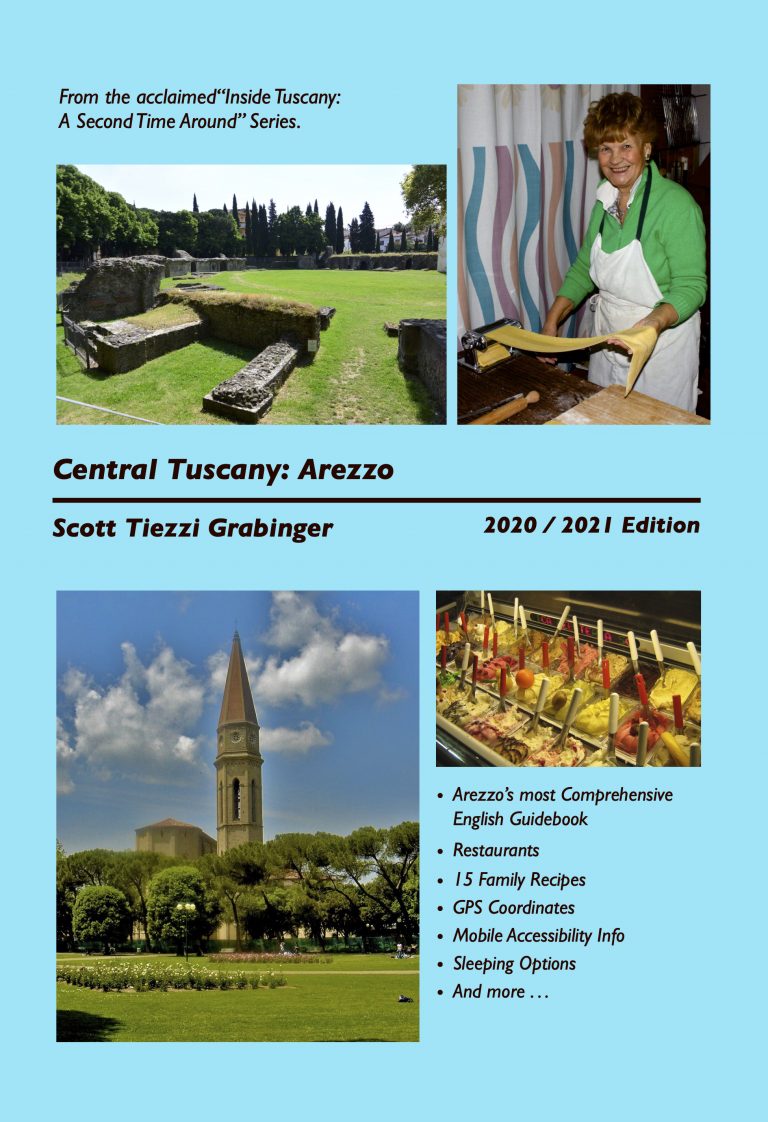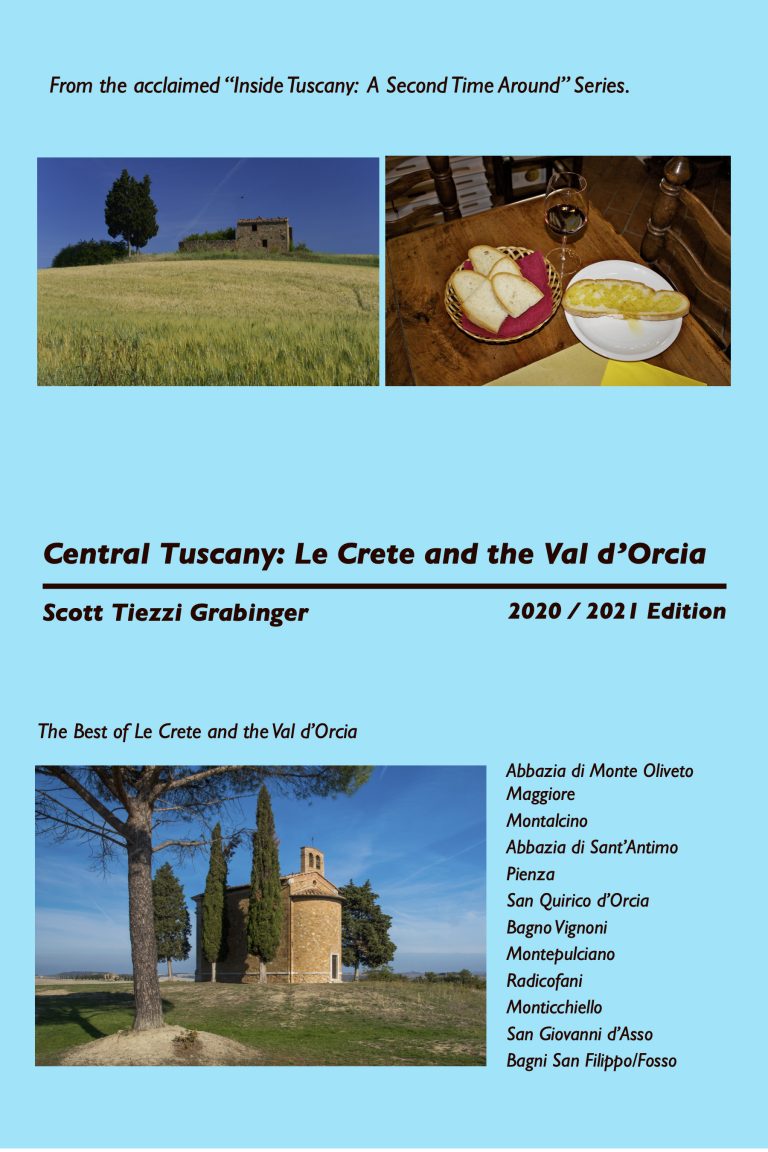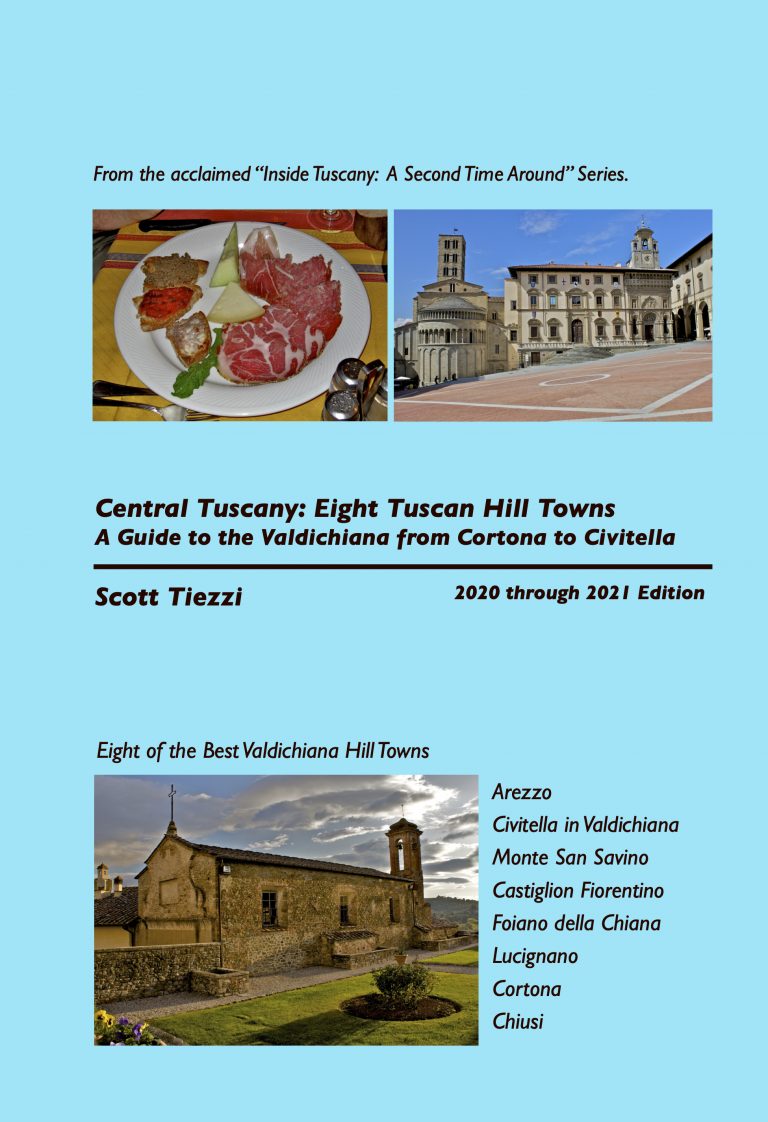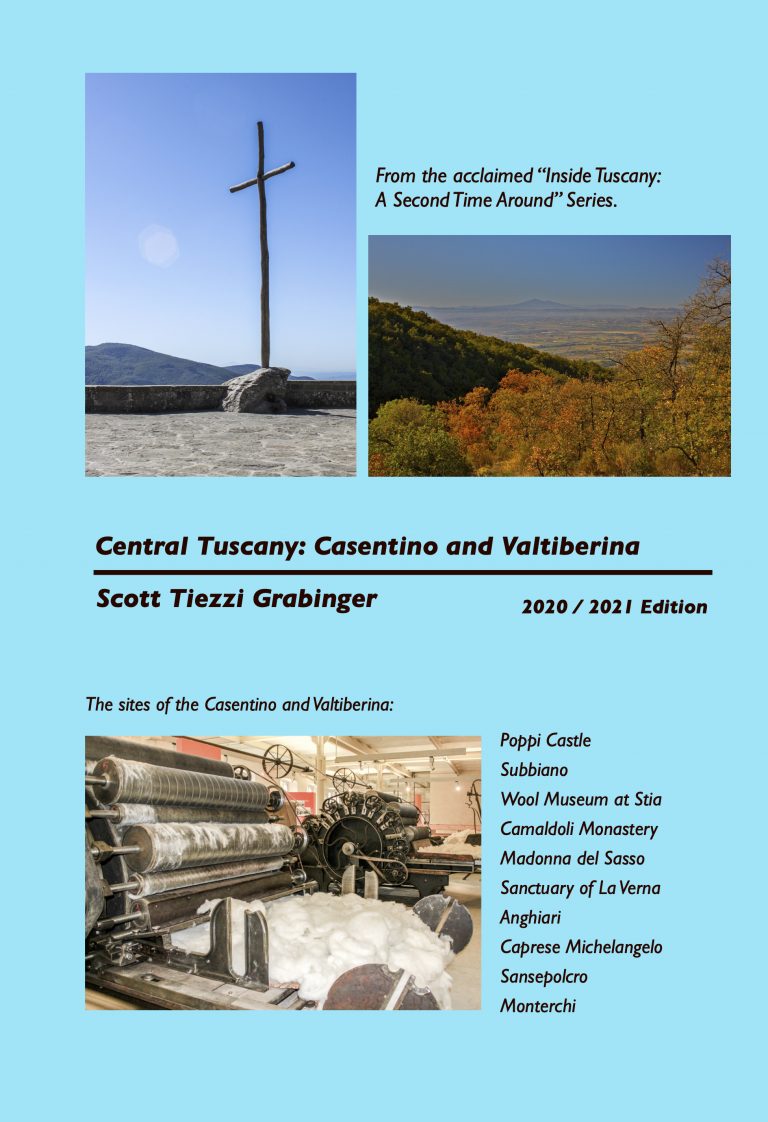— Most Comprehensive Guidebooks on Tuscan Hill Towns —
— Two Fascinating Memoirs of Traveling in Tuscany —
— An Exciting New Authentic Italian Cookbook —
Scott Tiezzi Grabinger has written some of the most comprehensive English guidebooks available on small town Tuscany, places missed on a first visit to Tuscany. These small towns help return visitors discover the “real” Tuscany: people, food, markets, festivals, museums, churches, and shops.
Scott’s travel anthologies, Walking the Aqueduct and Italian Adventures, introduce you to more of the Tuscan culture through his own adventures while living in Italy. Order books through Amazon.
Scott’s new cookbook, “DOC: 50 Tastes of Italy” brings the simplicity of Italian cooking to your kitchen
Antipasti — Primi Piatti — Secondi Piatti — Contorni — Pizza — Dolce — Digestivi
This is a cookbook for the countertop, not the bookshelf. You will want to cook from these recipes because theey use simple techniques and easy to find ingredients. My cookbook gets away from recipes that rely on tomatoes and garlic as American symbols of Italian food. These recipes are simple and rely on fresh ingredients.
— Explore More of Tuscany and Rome —
Food, Life and Travel
— Praise for "Walking the Aqueduct" —
— Very informative and a must read for anyone going to the Tuscany region or interested the many activities in the region. —
— In the spirit of John Steinbeck (Travels with Charley) and Charles Kuralt (America), Grabinger has authored a book which at once recounts his experiences in Tuscany and gives the reader a rich repertoire for knowledgeably approaching the region. In this fast-paced book, we learn what to expect at meals, on the autostrada, in the shops, and at the markets. It is a great source for understanding and coping with Italian (or at least Tuscan) culture. If you are going to Tuscany, read it! —
— Just to let you know how much we enjoyed your book, my wife and I took turns reading it to each other at our lake cabin in northern Minnesota, we broke out in laughter several times. —
— Inside Tuscany Guidebooks —
The latest guidebook on Cortona invites you to spend a couple of days in Cortona to view its excellent churches and museums and to experience the rhythm of daily life. Founded by Noah after the ark sailed up the Tiber — if you believe the legends — it sits high on a steep hill that overlooks much of Tuscany’s Valdichiana from Lake Trasimeno on the Umbrian border to the south to Civitella in the north.
READ MORE . . .
Arezzo makes a good base for exploring the southern and central parts of Tuscany. It’s just the right size to have enough to offer in terms of culture, churches, museums, art, hotels, shopping, and fine restaurants. It is full of artistic treasures by masters such as della Robbia, Marcillat, Vasari, and Piero della Franscesca. It’s less expensive than Florence, only a 45 minute train ride away. There is a festival or market to enjoy every weekend.
READ MORE . . .
This book takes you to the area of Tuscany that provides many of the pictures in calendars, coffee table books, TV shows, movies, and postcards — the cypress lined drives and roads going over hills with small towns and solitary farms. Val d’Orcia towns stand high on hills with their roccas visible for miles. Different areas produce a variety of world class wines and foods, especially the pecorino cheese from the Pienza region, Brunello di Montalcino, and Vino Nobile from Montepulciano.
READ MORE . . .
Visit eight charming Valdichiana hill towns in Tuscany. The Valdichiana is a large flat valley stretching south from the Umbrian border at Lake Trasimeno near Cortona to the town of Civitella in the north. Originally a swamp, it is now the breadbasket of Italy with fruit and olive orchards, crops of grain and corn, vineyards, and grazing land for the famous chianina beef, the source of bistecca Fiorentina.
READ MORE . . .
This guidebook takes you to many of the less visited sites in Central Tuscany in the valleys of the Casentino and Valtiberina. The Casentino is a heavily forested area in the mountains with natural, historical, and religious significance. The Valtiberina is near the eastern border of Tuscany with artistic significance from the Renaissance including the homes of Michelangelo and Piero della Francesca.
READ MORE . . .



